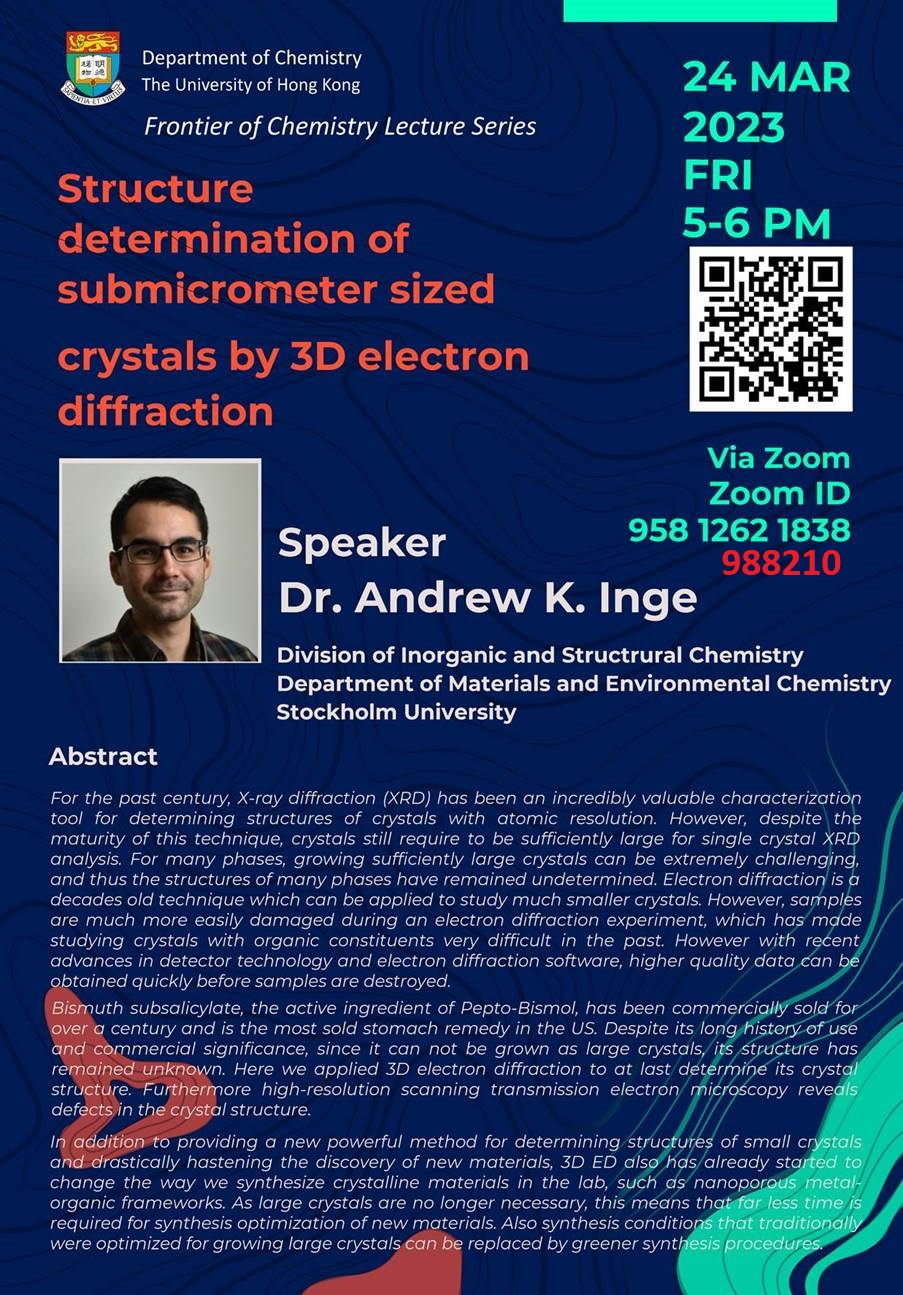| Date | 24 Mar 2023 |
| Time | 5:00 pm (HKT) |
| Venue | Zoom Webinar |
| Speaker | Dr. Andrew K. Inge |
| Institution | Department of Materials and Environmental Chemistry, Stockholm University |

Title:
Structure determination of submicrometer sized crystals by 3D electron diffraction
Schedule:
Date: 24 March 2023 (Friday)
Time: Start from 5:00 pm (HKT)
Via Zoom:
Zoom link: https://hku.zoom.us/j/95812621838
Zoom ID: 958 1262 1838 PassCode: 988210
Speaker:
Dr. Andrew K. Inge
Division of Inorganic and Structural Chemistry
Department of Materials and Environmental Chemistry
Stockholm University
Abstract:
For the past century, X-ray diffraction (XRD) has been an incredibly valuable characterization tool for determining structures of crystals with atomic resolution. However, despite the maturity of this technique, crystals still require to be sufficiently large for single crystal XRD analysis. For many phases, growing sufficiently large crystals can be extremely challenging, and thus the structures of many phases have remained undetermined. Electron diffraction is a decades old technique which can be applied to study much smaller crystals. However, samples are much more easily damaged during an electron diffraction experiment, which has made studying crystals with organic constituents very difficult in the past. However with recent advances in detector technology and electron diffraction software, higher quality data can be obtained quickly before samples are destroyed.
Bismuth subsalicylate, the active ingredient of Pepto-Bismol, has been commercially sold for over a century and is the most sold stomach remedy in the US. Despite its long history of use and commercial significance, since it can not be grown as large crystals, its structure has remained unknown. Here we applied 3D electron diffraction to at last determine its crystal structure. Furthermore high-resolution scanning transmission electron microscopy reveals defects in the crystal structure.
In addition to providing a new powerful method for determining structures of small crystals and drastically hastening the discovery of new materials, 3D ED also has already started to change the way we synthesize crystalline materials in the lab, such as nanoporous metalorganic frameworks. As large crystals are no longer necessary, this means that far less time is required for synthesis optimization of new materials. Also synthesis conditions that traditionallywere optimized for growing large crystals can be replaced by greener synthesis procedures.
- ALL ARE WELCOME -
